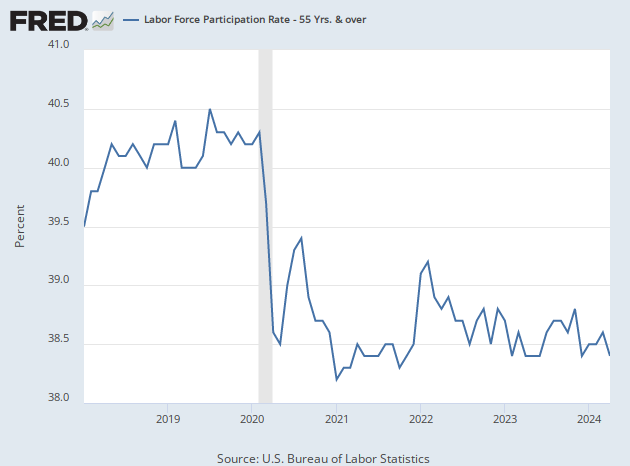Why are so many Americans not working?
Prices have soared over the past year, putting a strain on the household budgets of many. Job openings reached 11 million at the end of last year, pushing the ratio of vacancies to unemployed Americans to 1.9 to one. Yet employers are still have trouble finding workers.
Unlike some of the supposed labor shortages reported by agricultural and other businesses over the past 20 years, this appears to be for real. The labor force participation rate in January was just 62.4 percent, down from 63.3 percent prepandemic. The rise in labor force participation that the U.S. experienced in 2021 has stalled out. We have brought down unemployment and raised wages but workers are unexpectedly not returning.
This has surprised and alarmed officials at the Federal Reserve, who fear that the imbalance between the supply and demand for workers will drive inflation to stay too high or even rise further.
”Despite very high wages and an incredibly tight labor market, we don’t see participation moving up, which is contrary to what we thought,” Fed chairman Jerome Powell said in a press conference in December.
The decline has largely been concentrated among older Americans. While the prime age labor force participation rate—which looks at Americans between 25 and 54—has not fully recovered, it reached 82.7 in January, just three-tenths of a percentage point below the February 2020 level. For workers older than that, the participation rate is just 38.7, down from 40.3 prepandemic.


There is no simple or single explanation. A good case can be made, however, that the housing boom that followed the onset of the pandemic played a large role in reducing labor force participation among older workers. Basically, older homeowners found themselves flush with an unexpected windfall and just stopped working.
That’s the argument of recent paper by Jack Y Favilukis and Gen Li, both of the University of British Columbia. Its title makes the findings clear: “The Great Resignation Was Caused by the COVID-19 Housing Boom.” Favilukis and Li say that the so-called Great Resignation among older workers can be “fully explained” by increases in housing wealth.
How people respond to a rise home prices depends on their age and whether they rent or own. Renters of any age work more—have higher participation rates and hours worked—when prices rise. Younger homeowners also work more when prices rise, perhaps because they anticipate higher housing costs in the future. Middle-aged homeowners are unresponsive to increases in home price. Older homeowners, however, are more likely to reduce labor supply when housing returns are high, the paper finds.
The paper looks at what the participation rate would have been if housing returns in 2021 were equal to 2019 returns. It finds there would have been no decline in the labor force participation of older Americans in 2021. That is, older owners would have participated at 2019 rates.
But younger homeowners and renters would have worked less—and this largely offsets the withdrawal of older workers.
“Because of this trade off, the US labor force participation rate would have been only slightly larger if the US did not experience the real estate boom in 2021,” Failukis and Li write.

COMMENTS
Please let us know if you're having issues with commenting.